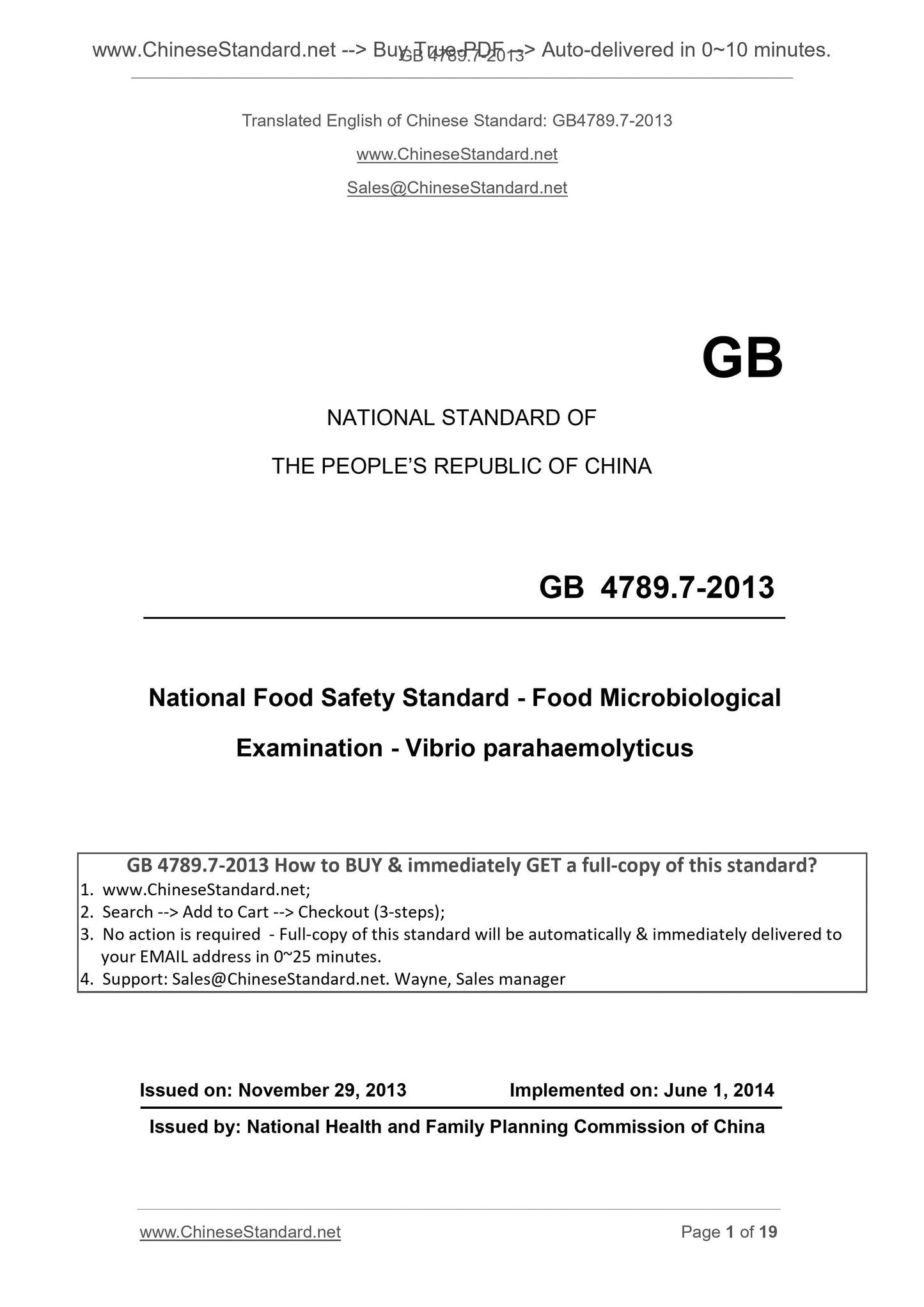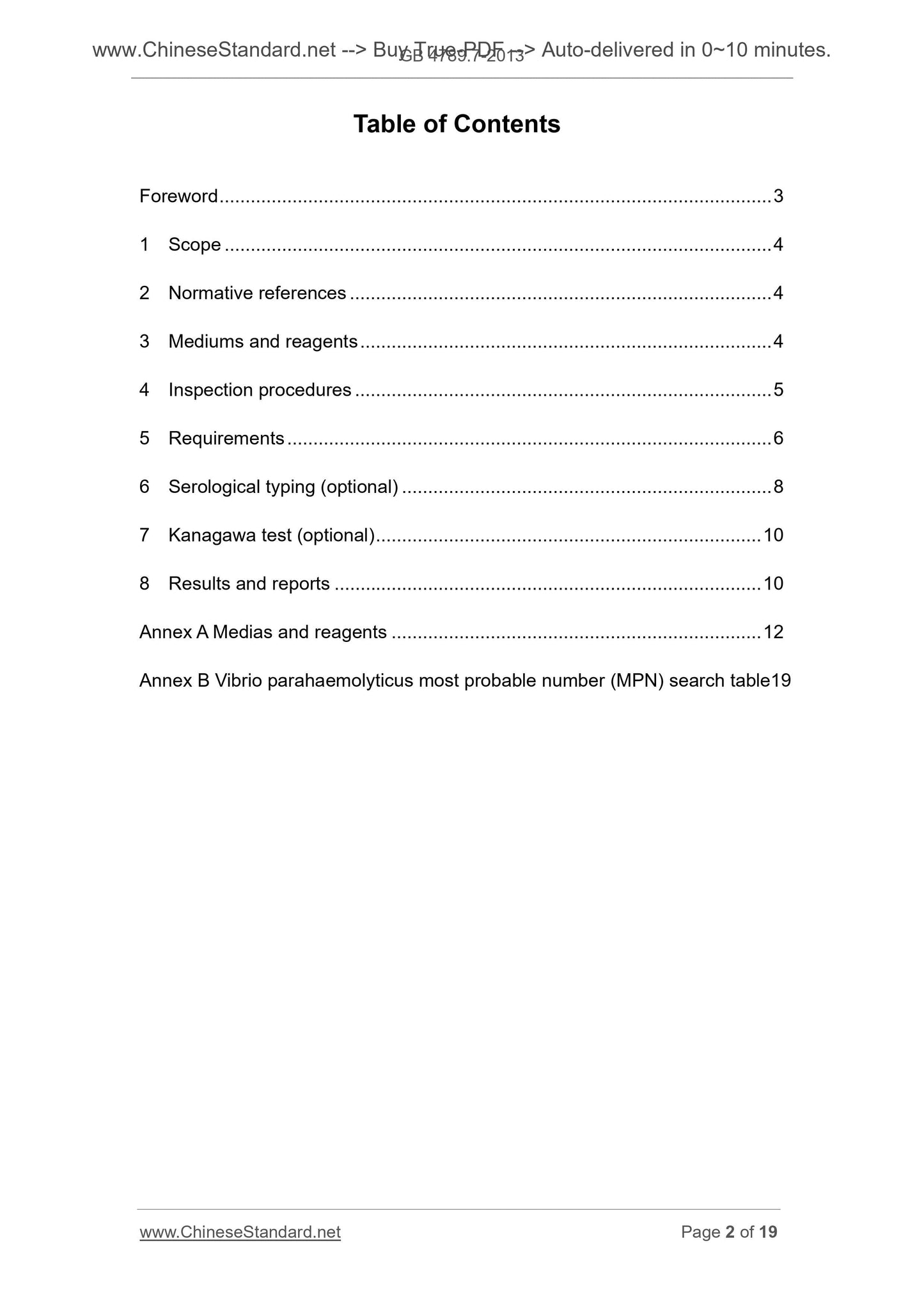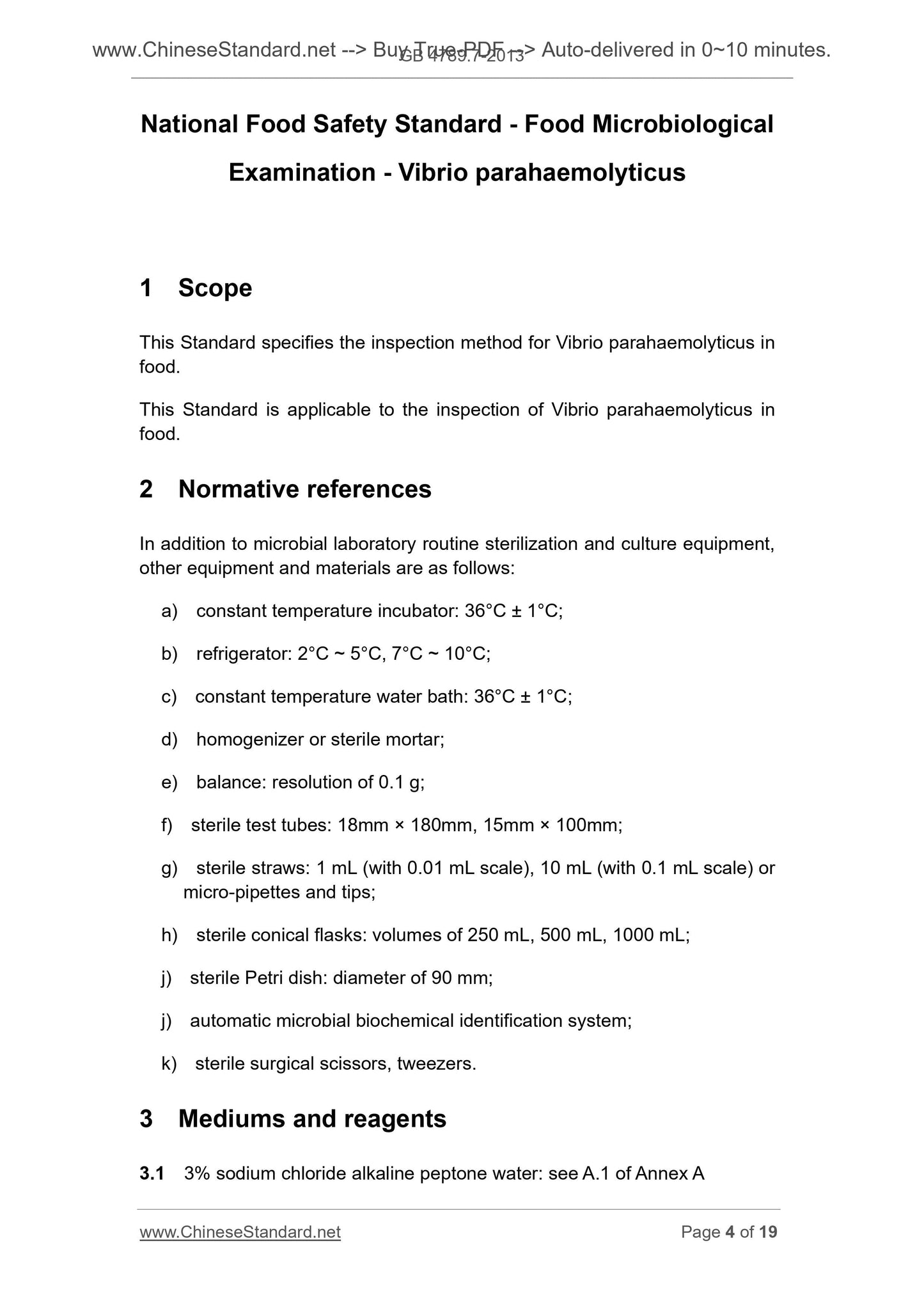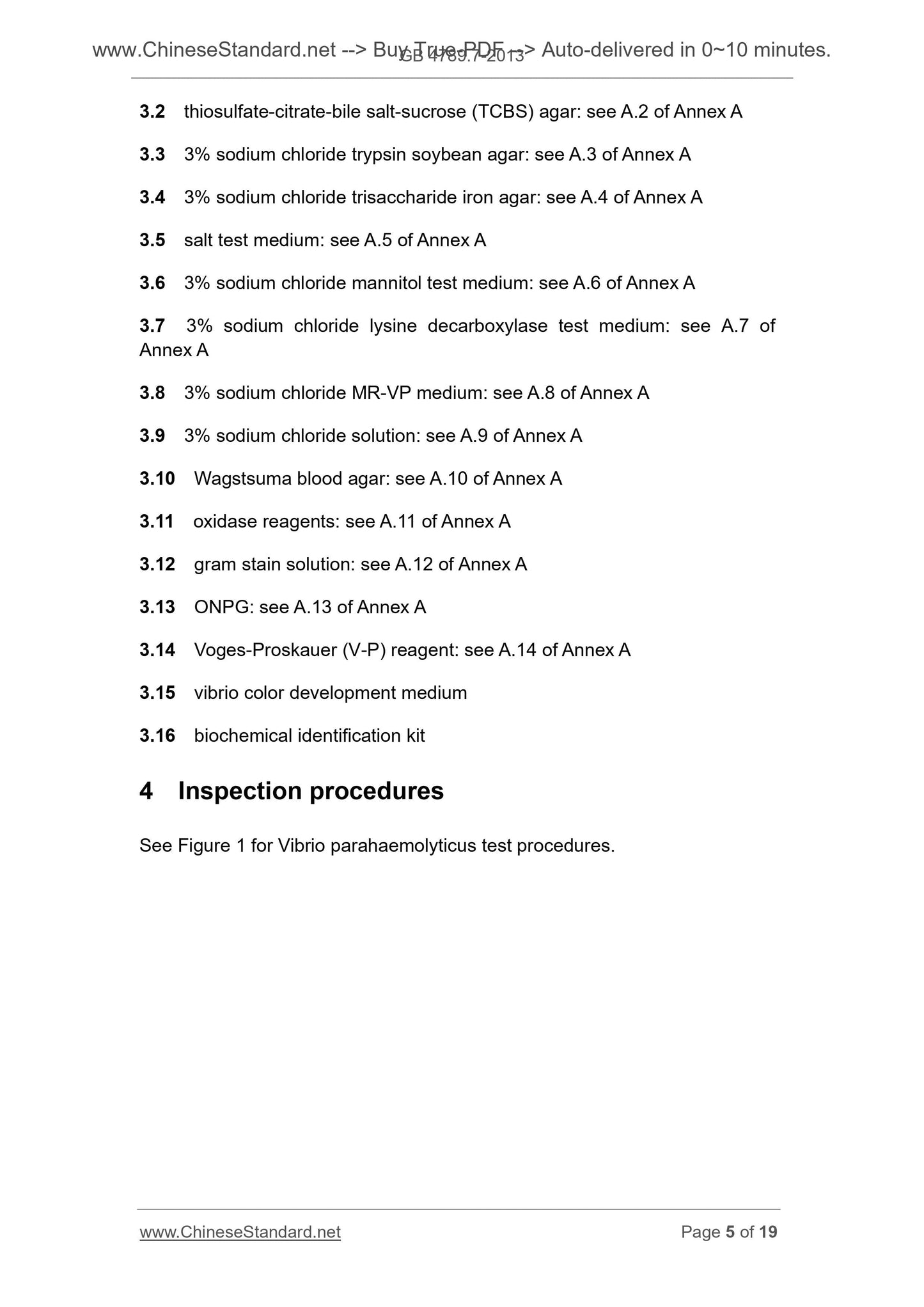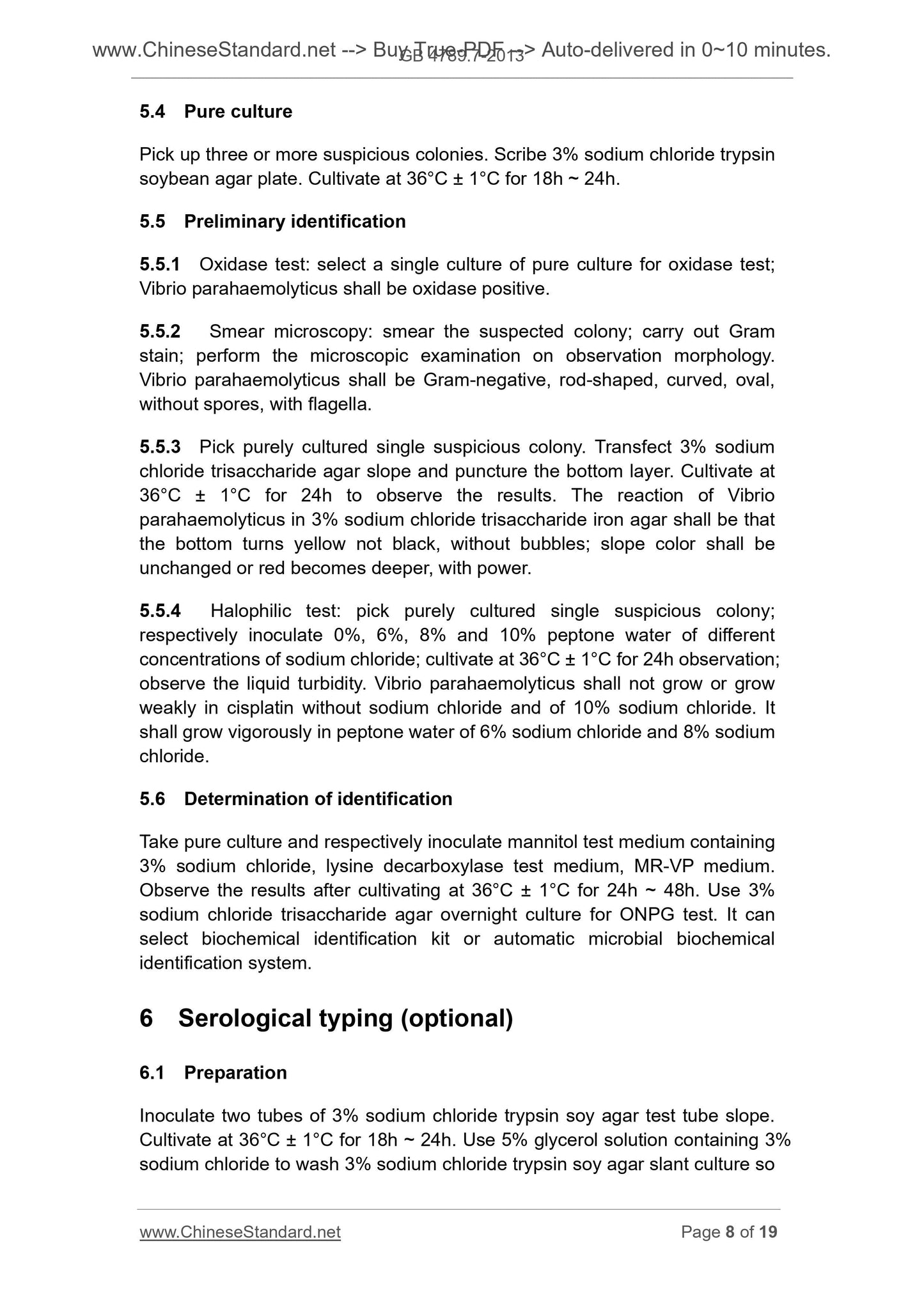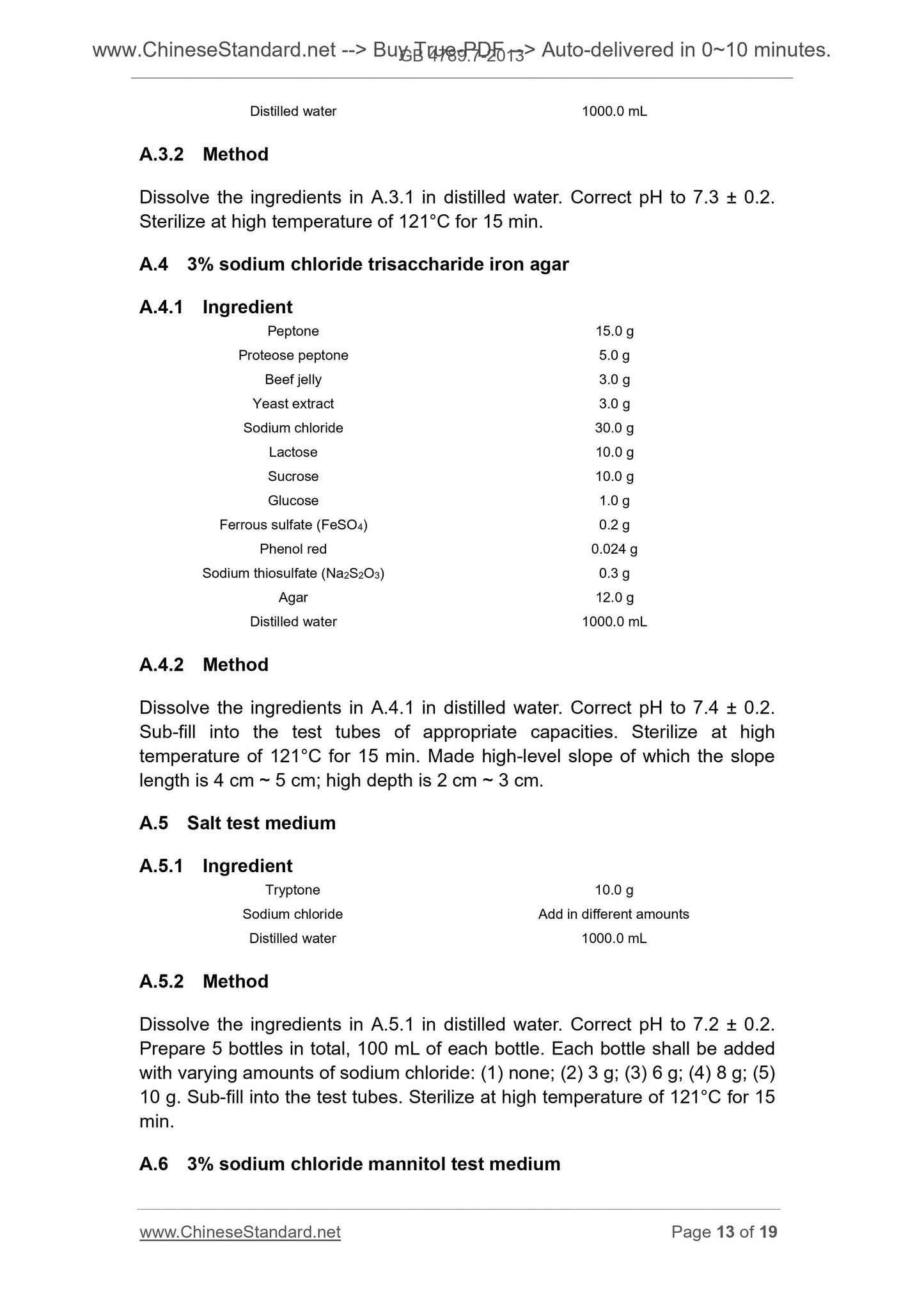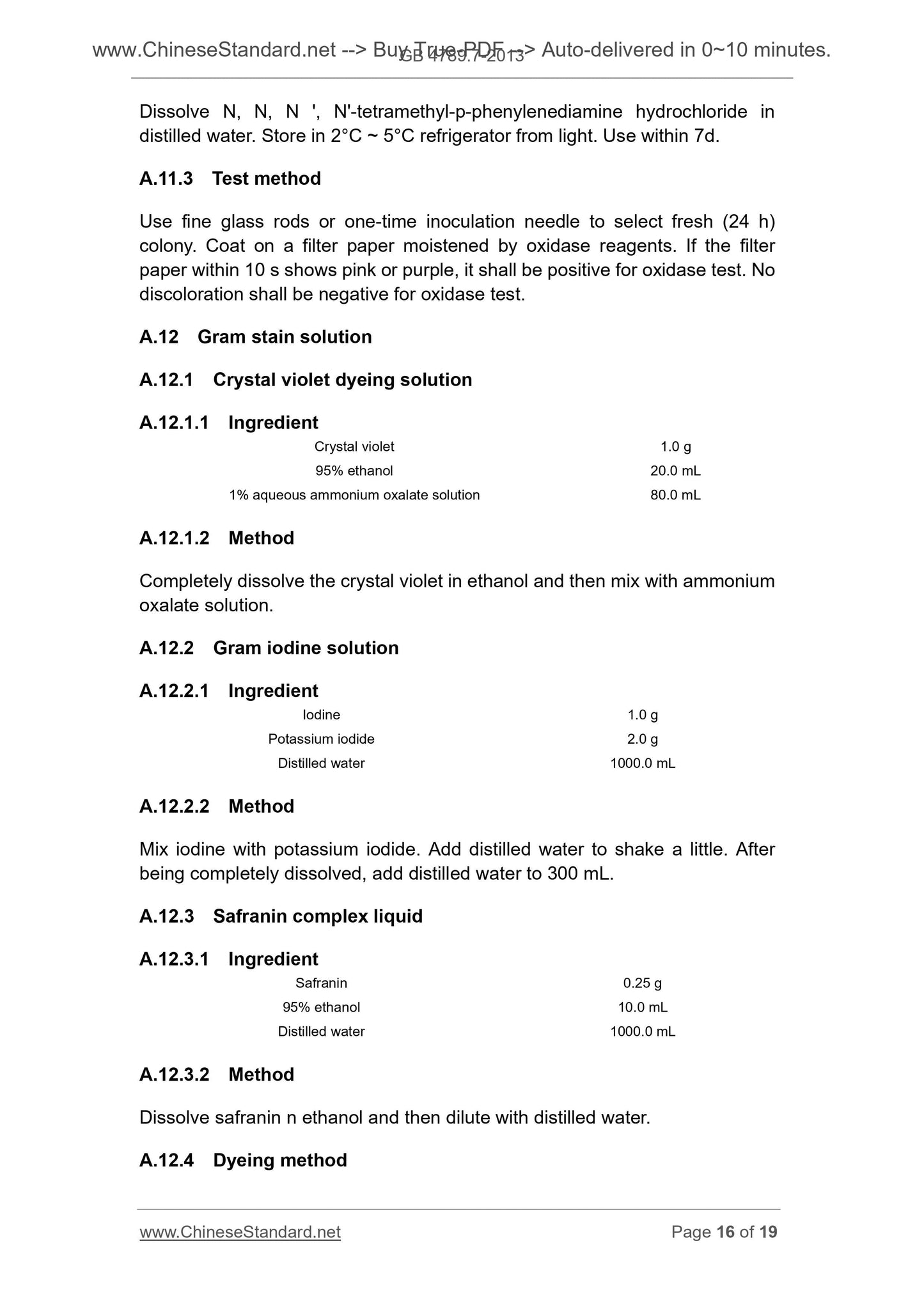1
/
of
7
www.ChineseStandard.us -- Field Test Asia Pte. Ltd.
GB 4789.7-2013 English PDF
GB 4789.7-2013 English PDF
Regular price
$115.00
Regular price
Sale price
$115.00
Unit price
/
per
Shipping calculated at checkout.
Couldn't load pickup availability
GB 4789.7-2013: National food safety standard - Food Microbiological Examination - Vibrio parahaemolyticus
Delivery: 9 seconds. Download (and Email) true-PDF + Invoice.Get Quotation: Click GB 4789.7-2013 (Self-service in 1-minute)
Newer / historical versions: GB 4789.7-2013
Preview True-PDF
Scope
This Standard specifies the inspection method for Vibrio parahaemolyticus infood.
This Standard is applicable to the inspection of Vibrio parahaemolyticus in
food.
Basic Data
| Standard ID | GB 4789.7-2013 (GB4789.7-2013) |
| Description (Translated English) | National food safety standard - Food Microbiological Examination - Vibrio parahaemolyticus |
| Sector / Industry | National Standard |
| Classification of Chinese Standard | C53 |
| Classification of International Standard | 07.100.30 |
| Word Count Estimation | 17,129 |
| Older Standard (superseded by this standard) | GB 4789.7-2008 |
| Regulation (derived from) | China Food and Drug Administration [2013] No. 234, November, 1, 2013 |
| Issuing agency(ies) | National Health and Family Planning Commission of the People's Republic of China |
| Summary | This Standard, from June 1, 2014, substitutes GB/T 4789. 7-2008 Food Microbiological Examination Vibrio parahaemolyticus. |
Share
